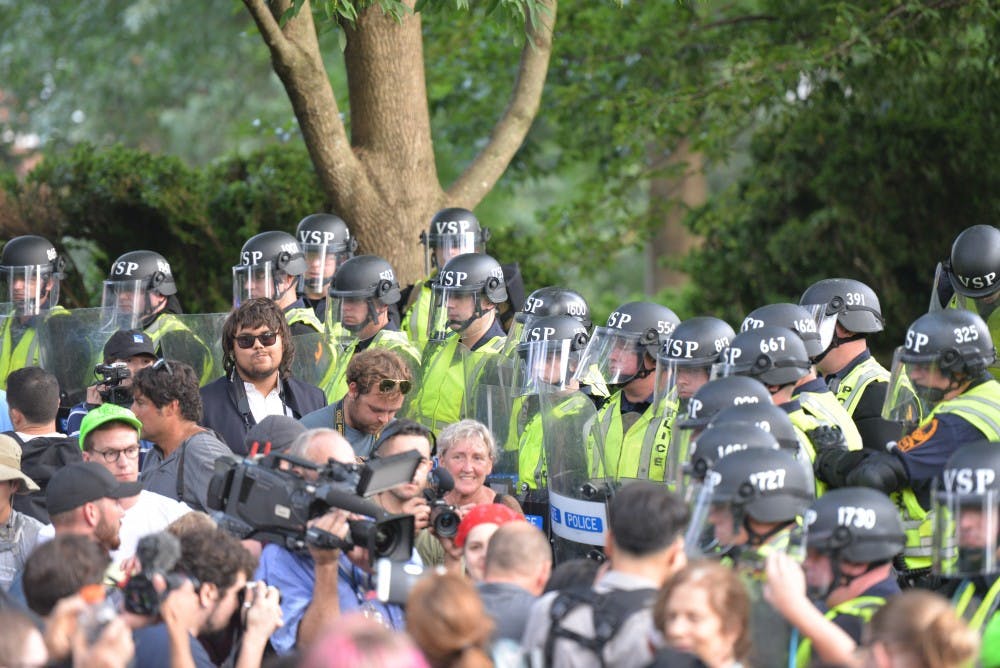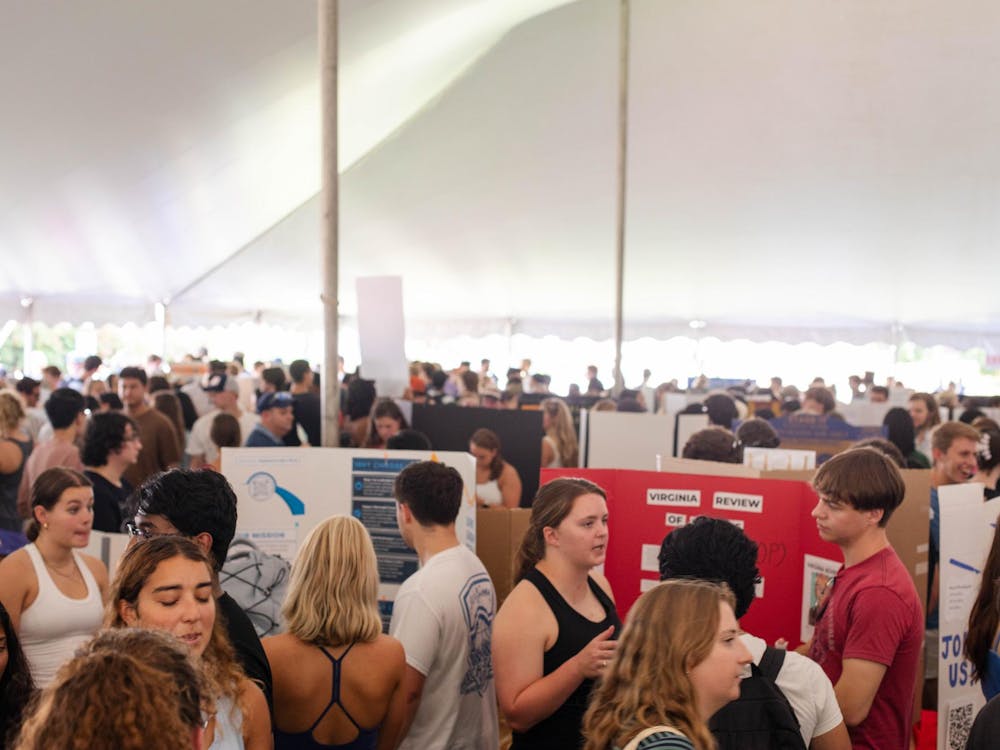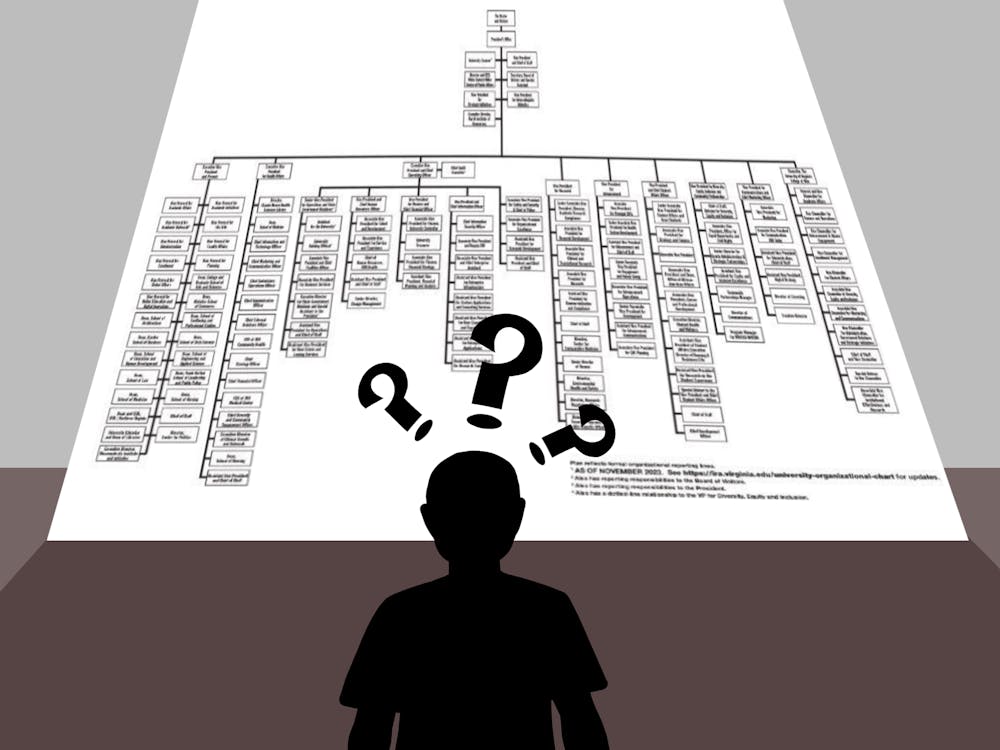Prior to the anniversary of Aug. 11 and 12, the University and Charlottesville community justifiably had several concerns and questions. Would the neo-Nazis return in force? How would the state, local and University police forces perform after failing to protect the community a year prior? What would the student activist groups, such as U.Va. Student United, organize to combat white supremacy in Charlottesville? All of these inquiries arose in anticipation of Unite the Right’s possible re-emergence.
Unfortunately, the answers to all of the above questions have proved to be troubling. The police force in Charlottesville in preparation of and during the demonstrations was excessive. The militarized police presence established within the City suggested that the authorities were prioritizing two things. For one, both the City of Charlottesville and the Commonwealth of Virginia were intent on projecting an image of strength and protection. Secondly, all of the parties feared any type of liability, such as Heather Heyer and state police troopers Berke Bates and H. Jay Cullen’s tragic deaths.
This massive police force stationed in Charlottesville and the University, purportedly for public safety, succeeded in a few ways but failed the ultimate test. While the University did the bare minimum — having some type of security force — the police presence was overblown to the point of threatening the same individuals for whom they should have provided a sense of security. Because of this, the students and locals, who should have felt a sense of safety, faced the opposite. The threatened became labelled as the threat.
The actions taken by police and University officials signaled a clear preference for optics rather than practical security. Student and local residents’ concerns took a backseat. The now-infamous picture of Lambeth Field’s parking lot filled with cop cars provides a backdrop for this conflict. While the state, City and the University gained an image of strong protection for social media, local residents and student activists felt rightfully threatened, especially residents and activists of color.
The University’s actions over the course of Aug. 11 and 12 this year reflected an attempt to correct last year’s failures. The general tightening of security after last year’s storming of the Lawn by neo-Nazis was justified, given last year’s complete lack of security preparedness. However, the University’s gross lack of readiness, as evidenced by the invasion of Grounds by neo-Nazis because of the administration's failure to respond to intelligence about threats and enforce policy, creates an already low benchmark. The deadly failures of last year should not translate into this year’s overcompensation.
The biggest takeaway from the weekend was the University and police force’s misidentification of activists as the enemy. Students United rightfully felt targeted by the University’s tightening of security at the Rotunda over the course of the day as well as the lack of input in arranging a protest site. While emphasizing security has its merits, the University’s role in squeezing and deceiving its students out of operating a protest site doesn’t. It is no wonder that Students United migrated to Brooks Hall to escape the oppressive stage created by the University.
This trend was well reflected by its email notifications in the form of Community Updates by Executive Vice President and Chief Operating Officer Patrick Hogan and Associate Vice President for Safety and Security Gloria Graham. As student activists pointed out, these updates were nonexistent last year when the true threat was present on Grounds. Yet when a peaceful protest occurred the following year by students — individuals with true stake in the University — their actions were policed by University officials intent on framing their movements as a threat. This false equivalency summarizes so much of the angst felt by students towards the University administration — it is clear that University only wants certain representations of certain students in certain spaces at certain times.
Moving forward, students have to contend with the University’s priorities, which seem inextricably linked to its marketable brand. To what extent is the University truly ours? For the amount of time spent quibbling about the equitable nature of the University’s “Community of Trust,” it is perhaps time to confront the how the institution of the University factors into that same community. Right now, it seems beholden to powers beyond students and the local residents that will live here long after we’re gone.
Activists chanted this August, “last year they came with torches, this year they came with badges.” This chant identifies that the fight to achieve equity within Charlottesville rests both on interrogating our community and our institutions. The fight to claim back our Grounds extends beyond the racist strangers that descended upon our city — the inner heart of our own institutions needs to be fiercely examined.
Katherine Smith is a Senior Opinion Columnist for The Cavalier Daily. She can be reached at k.smith@cavalierdaily.com.





